It’s called “Hummingbird” and it’s the latest update that Google has made to their search algorithm in an ongoing quest to provide the most relevant search results. It’s the largest update made to the search algorithm since 2001, so it’s pretty big news.
There are plenty of sites out there that break down exactly what this latest update does, so go ahead and use your favorite search engine to find them, or you can just check out Danny Sullivan’s article at SearchEngineLand.com.
Besides modifying the secret sauce that determines which websites come up when you search for something, Google made some changes to the way search results are displayed on mobile devices. These subtle changes have gotten very little mention in the articles about Hummingbird, so I thought I’d point out some of the changes I’ve come across.
Check out this screen shot from my iPad using the Google Chrome browser. As you can see, the pay-per-click (PPC) ads at the top and bottom of the page are now identified as such with a bright yellow “Ad” tag:
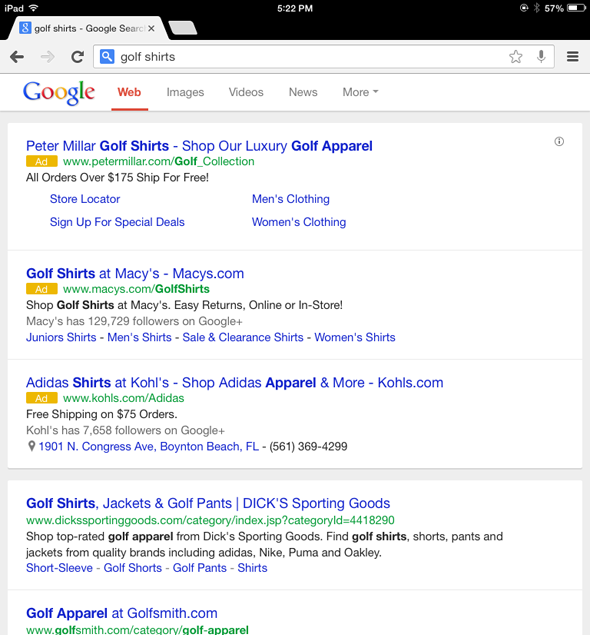
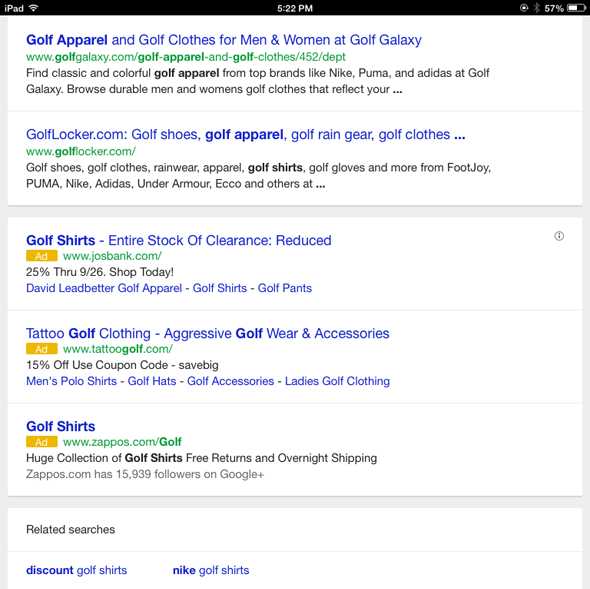
The desktop version has not adopted the callout and remains unchanged, although PPC ads are noted as being ads, the callout is not as blatant as on mobile:
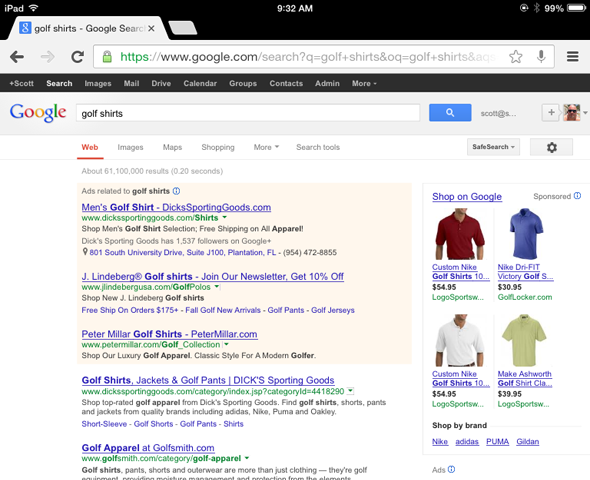
Same thing for search queries on my iPhone. PPC ads at the top are also identified with the bright yellow “Ad” tag:
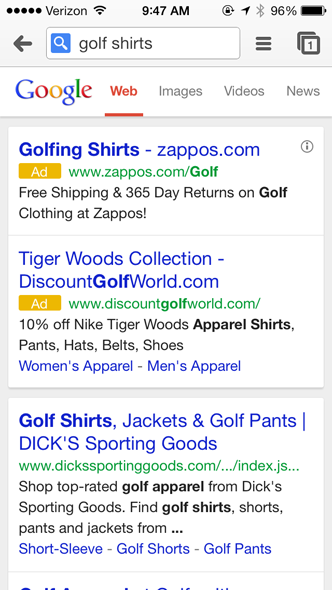
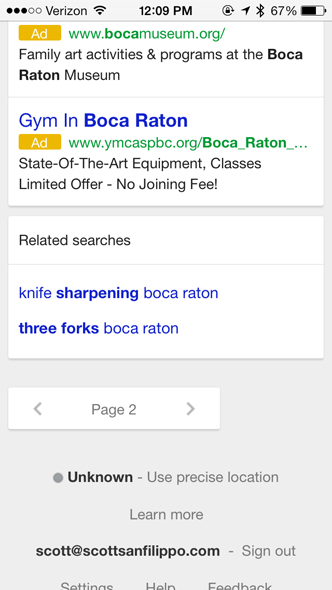
Is this a big deal? While you and I may know which listings on a page are a paid ad and which are not, does the average web surfer? I can’t help but wonder if the big yellow “Ad” graphic is going to result in decreased performance of ads displayed on mobile devices. If I was a betting man, I’d say performance will indeed suffer.
Hopefully I’m wrong.
So there are two take aways here:
1. Keep a close eye on your mobile ad stats and watch to see if this change is impacting you.
2. This is just another reason to step up your search engine optimization (SEO) efforts and provide quality content on your website that will result in getting you better organic rankings.
